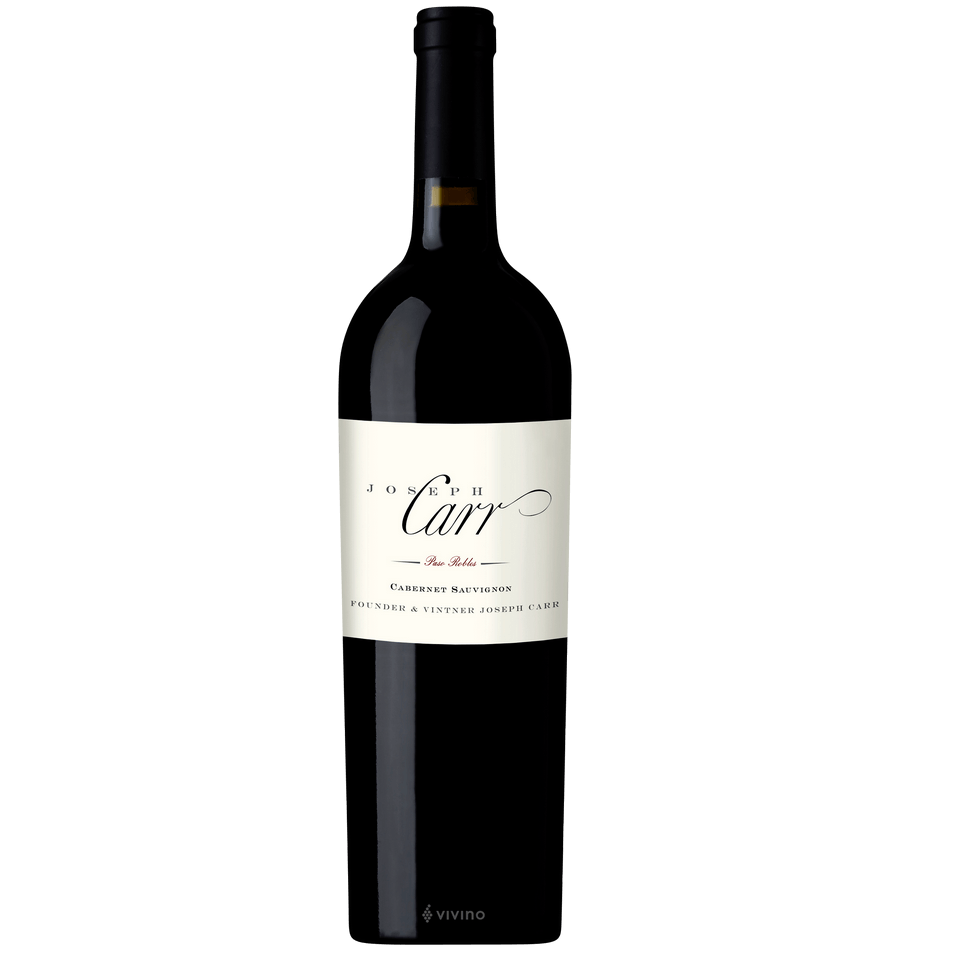2016 Joseph Carr Cabernet Sauvignon Paso Robles (NY Item)
$18.99
Out of stock
2016 Joseph Carr Cabernet Sauvignon Paso Robles
2016 Joseph Carr Cabernet Sauvignon Paso Robles This 2016 wine shows notes of black cherry, chocolate, and vanilla. Flavors of blackberry and sweet spice emerge on the palate, bolstered by a firm acidity, velvety tannin’s, and a long finish.
Carr Wine
In 2009, New York Times writer Eric Asimov proclaimed Joseph Carr a “producer to watch,” ranking his wines alongside the likes of Far Niente, Clos du Val, Heitz, Grgich Hills and Rubicon. Mr. Asimov continued his praise of Joseph Carr wines, calling them “wines of balance and restraint.”
After 10 years serving as a world-class sommelier followed by ten years as an international industry executive, Joseph Carr set out on his own in 2005 to form his family-owned wine company. It was, as Joseph Carr says, “a chance to follow a dream.” Joseph continues to work with many of the associates he has met throughout his long career, all with a shared passion and desire to produce world class wines. Influenced by the wines of Bordeaux and Burgundy, Joseph Carr’s winemaking philosophy is balance, sophistication and approachability; an old-world style producer, but distinctly Californian, sourcing Cabernet Sauvignon and Merlot from select vineyards in Rutherford, Oakville and the Stags Leap District.
Cabernet Sauvignon
Cabernet Sauvignon is the world’s foremost red wine-grape variety. Though widely cultivated throughout the world, it is most commonly associated with the red wines of Bordeaux.
In the vineyard, Cabernet Sauvignon grapes are small, thick-skinned and decidedly blue-colored, with a high pip-to-pulp ratio. Its thick skin results in wines of profoundly deep color, and the pips add a high level of tannin.
It ripens late, which is advantageous in warmer climates like Bordeaux, France and California. In colder growing environments, Cabernet Sauvignon can easily fail to ripen properly. Unripe Cabernet Sauvignon shows a lot of the aromas similar to unripe Cabernet Franc, notably a green or herbaceous character. This may not be entirely surprising, as Cabernet Sauvignon’s parents are Cabernet Franc and Sauvignon Blanc.
Cabernet Sauvignon’s flavors can vary from region to another. Cabernet Sauvignon produced in Bordeaux’s Margaux appellation varies considerably from one grown farther north in Pauillac, for example. The best Cabernet Sauvignon wines tend to have deep color, good structure and a full body. They are tannic in youth, especially when aged in oak, and often require a few years to soften before they become enjoyable to drink. Typical flavors may include black fruits like blackcurrant or blackberry, as well as fragrant cigar box, tobacco and coffee.
Related products
Wines!
SAVE 36% 98pts Andrew Jeffords Decanter
Wines!
Best Sell Cabernet Sauvignon
98pts Parker and 97-100pts Parker
Wines!
Best Sell Cabernet Sauvignon
93pts Parker's WA 94pts JD; Great Vintage; SAVE 40%






